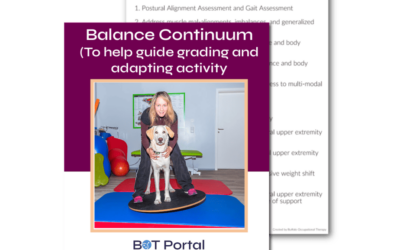Balance Continuum to Guide Grading and Adapting
$4.00
In occupational therapy, the balance continuum serves as a foundational framework for optimizing occupational performance and promoting overall well-being. This continuum encapsulates a spectrum of interventions and strategies aimed at enhancing stability, coordination, and mobility across various contexts of occupation. By understanding and implementing the principles of the balance continuum, occupational therapists play a pivotal role in empowering individuals to achieve their occupational goals and lead fulfilling lives.
At the core of the balance continuum lie twelve key components, each addressing specific aspects of balance and stability essential for occupational performance. These components range from postural alignment assessment, sitting continuum, and gait analysis to dynamic standing activities requiring extensive weight shift beyond the base of support. Occupational therapists utilize these components to tailor interventions that meet the unique needs and goals of their clients, fostering gradual progress and skill development.
